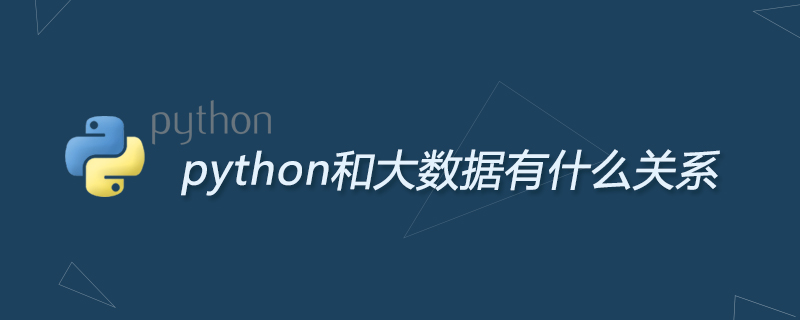
Since 2004, the usage of Python has grown linearly. In January 2011, it was named the 2010 Language of the Year by the TIOBE Programming Language Ranking. Due to the simplicity, readability and scalability of the Python language, there are an increasing number of research institutions using Python for scientific computing abroad. Some well-known universities have adopted Python to teach programming courses.
Data is an asset. Big data engineer is a very hot and high-paying position now. Not only Java is used for big data development and analysis, Python is also an important language.

Big data refers to a collection of data that cannot be captured, managed, and processed within a certain time range using conventional software tools. It requires new processing models to enable stronger decision-making. Massive, high-growth and diversified information assets with powerful capabilities, insights and process optimization capabilities. (Recommended learning: Python video tutorial)
Why is python big data?
As you can see from the encyclopedia introduction to big data, big data To become an information asset, two steps are required. One is how the data comes from, and the other is data processing.
Where does the data come from?
Regarding the issue of how data comes from, data mining is undoubtedly the first choice for many companies or individuals. After all, most companies or individuals do not have the ability to generate so much data and can only mine the Internet. related data.
Web crawlers are Python’s traditional strong areas. The popular crawler framework Scrapy, HTTP tool kit urlib2, HTML parsing tool beautifulsoup, XML parser lxml, etc. are all class libraries that can stand alone.
Of course, web crawlers don’t just open web pages, how simple is it to parse HTML. An efficient crawler must be able to support a large number of flexible concurrent operations, and often be able to crawl thousands or even tens of thousands of web pages at the same time. The traditional thread pool method wastes a lot of resources. After the number of threads reaches thousands, system resources are basically wasted. Thread scheduling is on.
Because Python can well support coroutine operations, many concurrency libraries have been developed based on this, such as Gevent, Eventlet, and distributed task frameworks such as Celery. ZeroMQ, which is considered more efficient than AMQP, also provided a Python version earlier. With support for high concurrency, web crawlers can truly reach the scale of big data.
Data processing:
With big data, you also need to process it to find the data that suits you. In the direction of data processing, Python is also one of the favorite languages of data scientists. This is because Python itself is an engineering language. The algorithms implemented by data scientists in Python can be directly used in products, which is very important for big data startups. Cost savings can be very helpful.
For more Python-related technical articles, please visit the Python Tutorial column to learn
The above is the detailed content of What is the relationship between python and big data?. For more information, please follow other related articles on the PHP Chinese website!